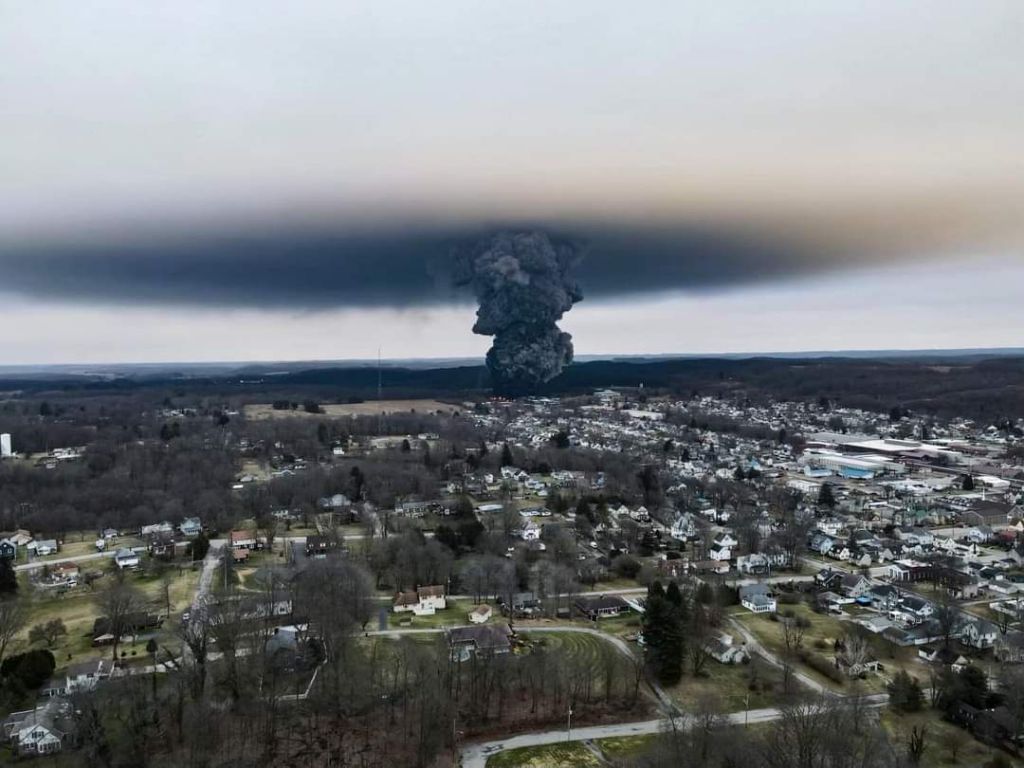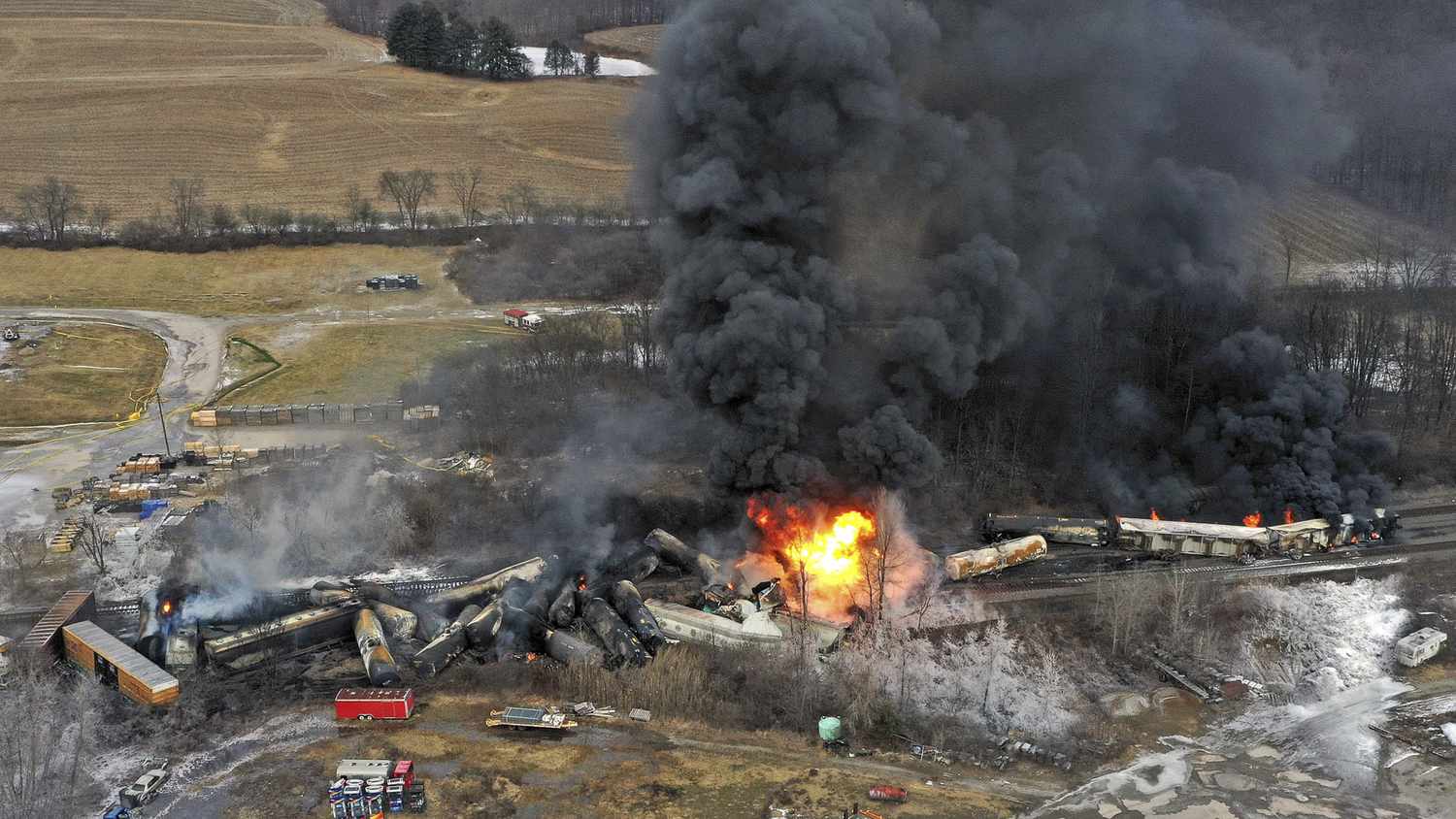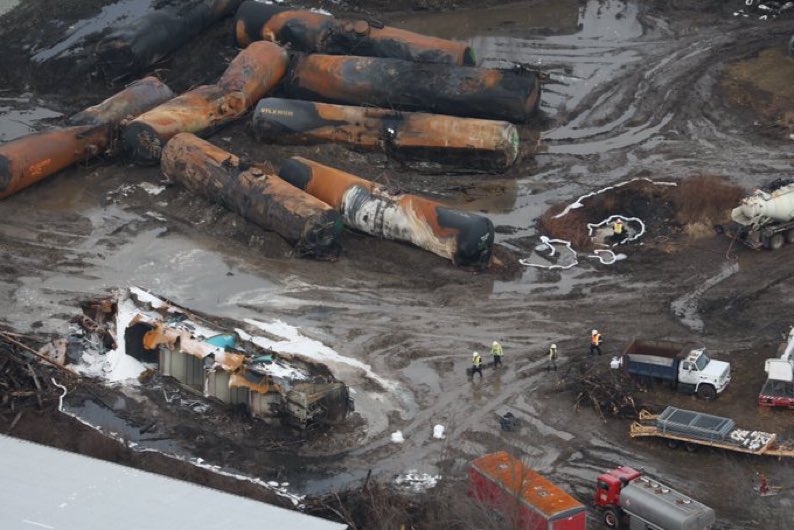Ohio derailment: the incriminated wheelset was 122°C too hot

The wheelset that caused a disastrous accident in Ohio, United States, at the beginning of February was 122°C hotter than the ambient temperature. This is what transpired from the preliminary report published by the National Transport Safety Board (NTSB) on 23 February. Norfolk Southern (NS), the company that was operating the train, has a protocol for monitoring the temperature of wheelsets. Clearly, the protocol was not able to prevent this tragedy.
The temperature of the wheelsets is monitored by hot-bearing detectors (HBD) along the railway track. When the wheelset temperature is between 76 and 93°C hotter than the ambient temperature, the NS protocol deems it necessary to stop and inspect the issue, despite considering it non-critical. If the difference in temperature between the ambient and the wheelset is greater than 93°C, the situation is classified as critical and the railcar needs to be set aside.

According to the NTSB report, the wheelset started heating up roughly 50 kilometres before the derailment site. At that point, the wheelset was in fact 3°C hotter than the ambient temperature. When the train was 34 kilometres away from the derailment site, the difference between the wheelset temperature and the ambient temperature recorded by a second HBD was almost 40°C. The third HBD, located in the vicinity of where the train derailed recorded that the wheelset was 122°C hotter than the ambient temperature, meaning that the situation was already more than critical. The convoy was therefore stopped and a possible derailment was notified to the authorities.
The EPA is asking Norfolk Southern to speed up the cleaning process
The derailment of the train caused various chemicals to be liberated into the air, with some of it leaking in the water nearby, sparking fears of long-term effects on the population. On Friday 24 February, the Environmental Protection Agency (EPA) issued a directive to NS demanding to accelerate cleanup processes, which the company will have to pay for. “Under this February 24th directive, waste disposal plans, including disposal location and transportation routes for contaminated waste, are subject to EPA review and approval moving forward”, the EPA explained.
However, on the following day, the Agency halted the transportation of contaminated waste to make sure that the procedure was being carried out properly. Shipments of toxic waste were resumed on 27 February, when some of the liquid waste left the derailment site heading towards a facility in Vickery, Ohio. Here, according to the EPA “where it will be disposed of in an underground injection well”. The Agency also stated that, starting today, NS will commence shipping solid waste to the incinerator in East Liverpool, Ohio. In the meantime, the EPA is continuing to identify other solid waste disposal sites.

Health concerns are increasing despite the EPA’s claims
US news outlet NBC News claimed that various citizens of the area surrounding the derailment have been having health problems since the accident occurred. Some citizens were diagnosed with illnesses possibly associated with chemical exposure, including bronchitis. Other health issues concern headaches, rashes, and respiratory problems. According to NBC News, a woman resident in East Palestine, where the train derailed, has been in the hospital since 5 February with acute bronchitis due to chemical fumes.
A ceramic manufacturing company also claimed that the derailment and consequent dispersion of chemicals in the environment has impacted the health of its workforce. In the days immediately after the accident, the company was forced to close shop for about a week. After resuming operations on 13 February, however, the company’s general manager claimed that employees started falling ill, with some needing inhalers to help them breathe.
Despite all these issues, the EPA continues to claim that the analyses of the air and water in the area are not showing any signs of contaminants associated with the derailment. The Agency claims it has screened 578 houses, 121 private wells, and samples of public drinking water from East Palestine.
Also read:





The temperatures were given in Fahrenheit by the US authorities and I think you have converted them wrongly. When it is a difference you just divide by 9 and multiply by 5, so a difference of 38F is a difference of 21C, not 3C.